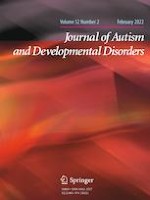22-03-2021 | Original Paper
Camouflaging in Autistic and Non-autistic Adolescents in the Modern Context of Social Media
Gepubliceerd in: Journal of Autism and Developmental Disorders | Uitgave 2/2022
Log in om toegang te krijgenAbstract
Camouflaging is described as a set of strategies used to prevent others from noticing one’s social difficulties. Research indicates heightened levels of camouflaging behaviours in the adult autistic population. To extend understanding of camouflaging in adolescents, this mixed-methods study explored camouflaging behaviours in offline and online contexts with 40 autistic and 158 non-autistic adolescents. At the quantitative phase, participants completed measures of camouflaging behaviours (online vs offline) and measures of social media use. Following this, six autistic adolescents participated in semi-structured interviews. Findings indicate that in the offline context, autistic adolescents camouflage more than non-autistic adolescents. Online, autistic participants camouflage less than they do offline, and females camouflage more than males. Implications for research and theory are discussed.
